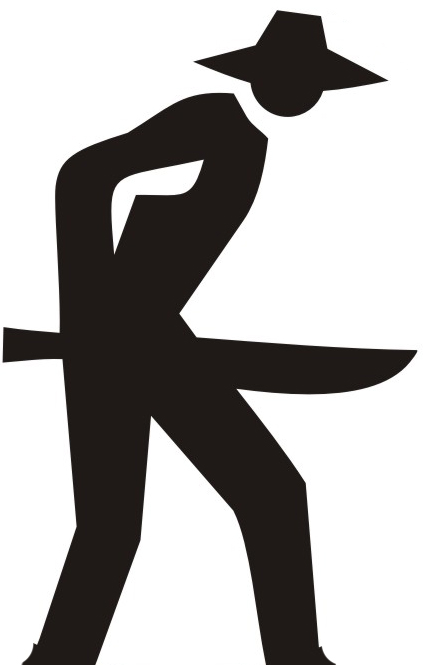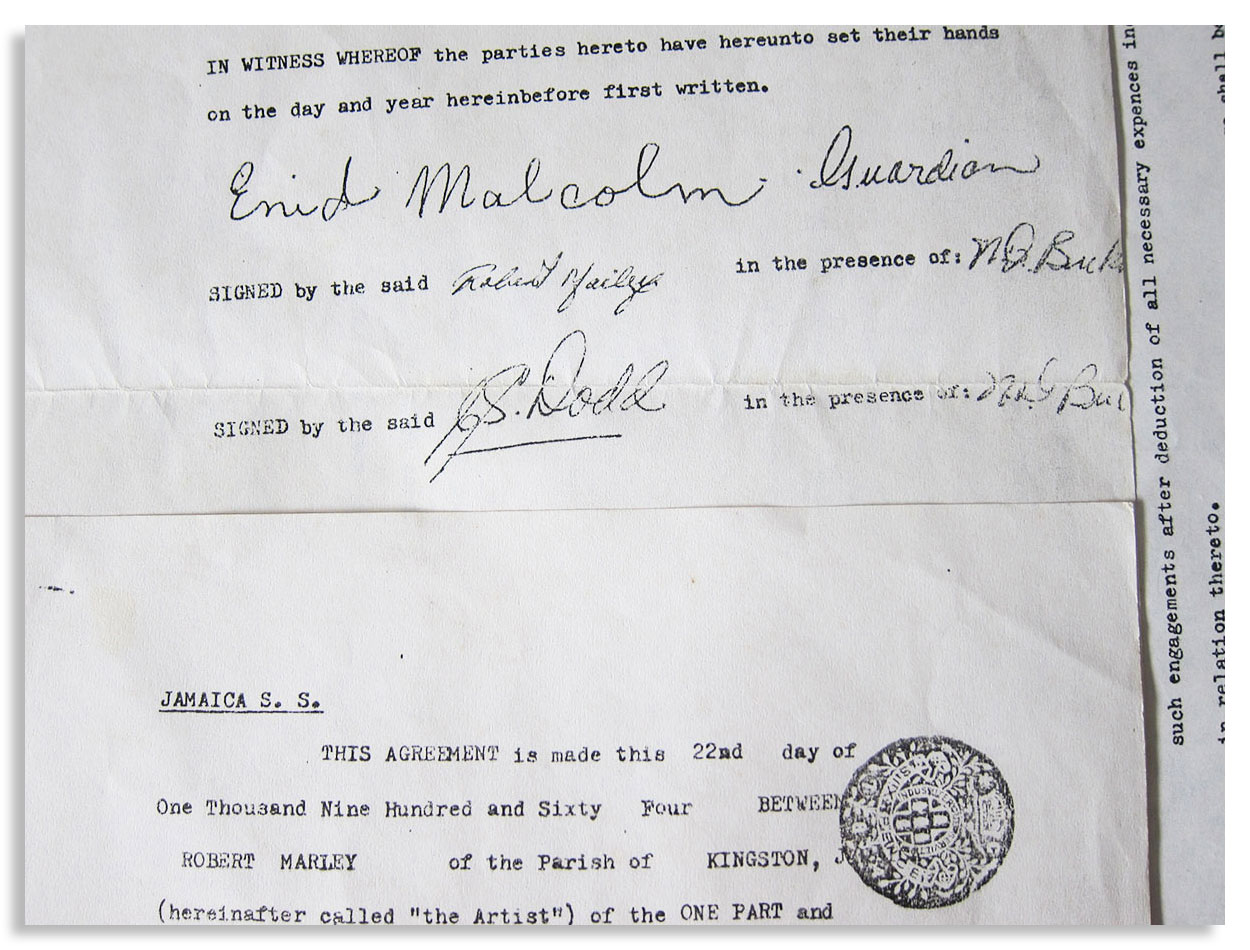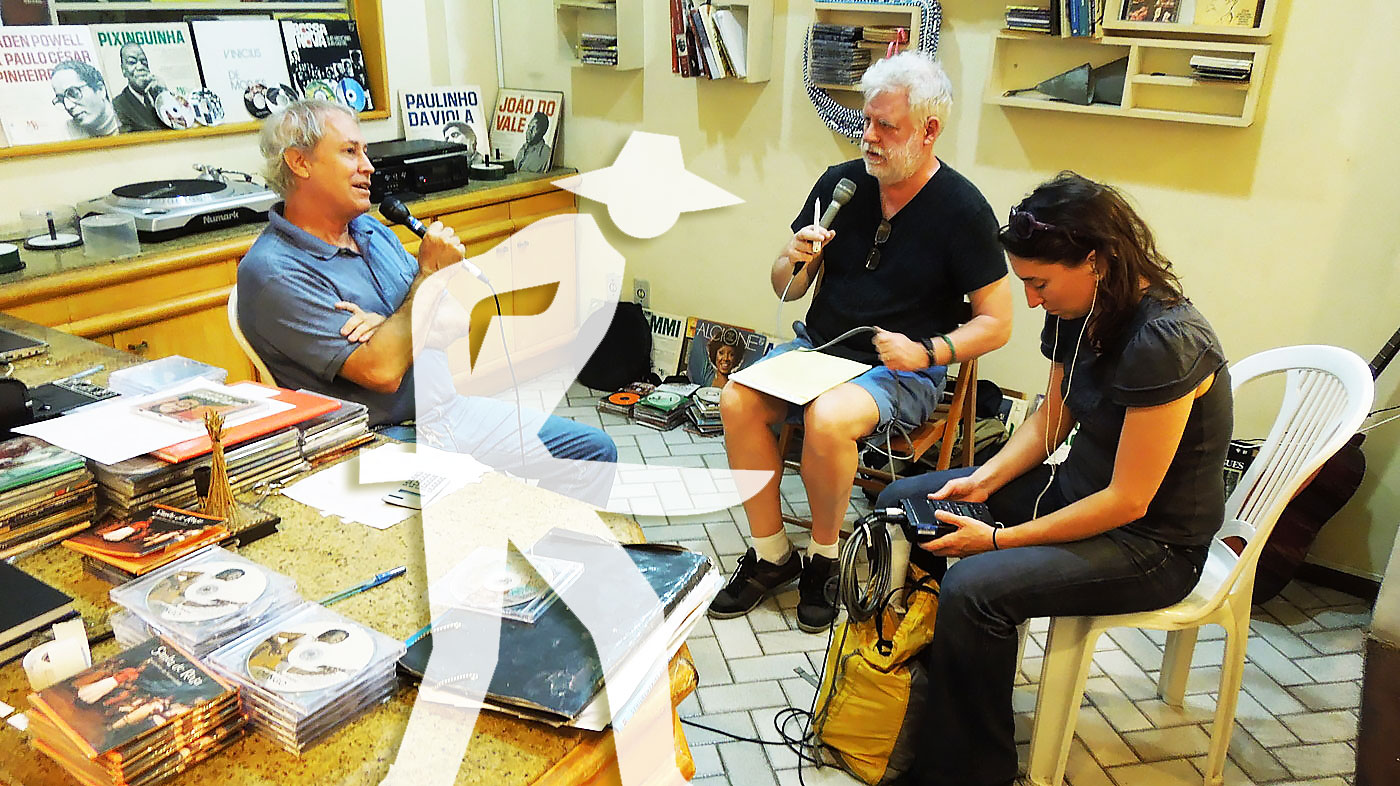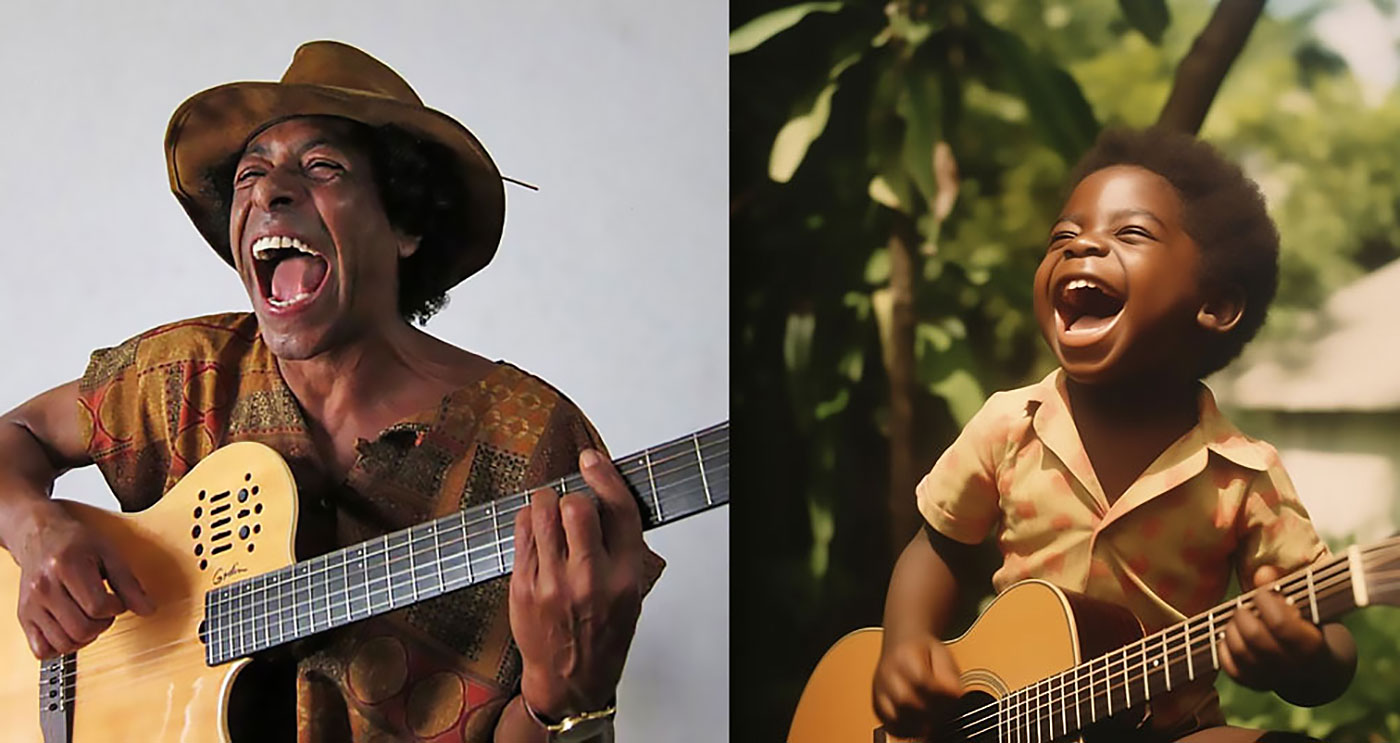CURATION
- from this page: by Matrix
Network Node
- Name: Roberto Fonseca
- City/Place: Barcelona
- Country: Spain
- Hometown: Havana, Cuba
Life & Work
-
Bio:
Roberto Fonseca is a Cuban pianist, vocalist, multi-instrumentalist, composer, producer and bandleader. Havana-born and based, he has released nine solo albums, collaborated across genres, been nominated for a Grammy Award and toured the world several times over. Along the way he has achieved the aim with which he began his professional career in the early 1990s: “Wherever people are, I want them to hear my music and say, ‘This is Roberto Fonseca’.”
An artist of prowess and ideas, with a questing jazz sensibility and deep roots in the Afro-Cuban tradition, Fonseca continues to astound. ‘The most exciting pianist in Cuba,” avowed Britain’s Guardian newspaper. *Does something new with the old, without ever denying its origins, and opens himself to the world,” insisted France’s Le Figaro. “Makes all possibilities seem possible, and the moment feel perfect, intensely true,” declared the New York Times.
Born in 1975, Fonseca grew up in San Miguel del Padrón in the unassuming Barrio Obrero on the southeastern outskirts of Havana. His father, Roberto Fonseca Senior, played the drums. His mother, Mercedes Cortes Alfaro, was a dancer at the legendary Tropicana Club and is renowned within Cuba as a singer of boleros. His two elder half-brothers are a drummer and a percussionist; the young Roberto was four-years-old when he started playing drums – his first professional gig was in a Beatles cover band – before taking up piano aged eight. He has been composing his own music since adolescence.
His technique is as percussive and muscular as it is agile and delicate. His tastes were always eclectic: hard rock, for its energy and basslines. American jazz, taught at school, consumed in between, with Herbie Hancock, Keith Jarrett and Oscar Peterson on rotation. Funk and soul. Music made in Africa and Brazil. Reggaeton, electronica, hip-hop. Classical music: “Mozart, Chopin, Beethoven, Rachmaninov, Scriabin, Grieg, Bartok,” says Fonseca. “Every day, still.”
And always, ¡siempre!, the music of Cuba – that vibrant, tenacious, creatively fecund Caribbean island. Fonseca’s deep AfroCuban roots underpin a sound that builds bridges between ancient and modern and takes Cuban music – all music – forward, embracing challenges, breaking chains, showing what can be. Inspiring young musicians in Cuba, for whom Fonseca’s cross-genre adventures and international success are a benchmark.
Fonseca was 15-years-old when he made his live solo debut at the Jazz Plaza Festival in Havana. He went on to graduate with a Masters degree in Composition from the prestigious Institute Superior del Arte, determined to focus outward while staying true to his AfroCuban core. Aged 21, he played piano accompaniment to an Italian singer on a tour of Italy. Back in Cuba he joined Temperamento, the progressive jazz outfit led by reedsman Javier Zalba, collaborating with the group for some 15 years and recording the likes of 1998’s En El Comienzo, which won Best Jazz Album at industry awards Cubadisco.
In 1999 Fonseca released his solo debut, Tiene Que Ver. Two albums swiftly followed: 2000’s No Limit: AfroCuban Jazz, a cult classic he recorded in Japan, and Elengó (2001), which mixed AfroCuban rhythms with hip-hop and drum’n’bass. He composed the soundtrack for Black, a film by French director P. Maraval, and produced an album for hip-hop act Obsesión. The international spotlight shone bright in 2001 when Fonseca joined that famed ensemble of elderly maestros, the Buena Vista Social Club, taking over the piano chair from the ailing Ruben Gonzalez (1919 – 2003) then touring the globe with singer Ibrahim Ferrer (1927 – 2005) then with BVSC alumni including evergreen diva Omara Portuondo.
After co-producing and playing on Ferrer’s posthumously released Mi Sueño: A Bolero Songbook (2006), Fonseca unleashed his landmark 2007 jazz-roots solo album Zamazu. Hailed as sensual and modern, as strongly spiritual and crazily trailblazing, Zamazu’s audacious vision involved 20 guest collaborators and augured a glittering future. He followed through with 2009’s Akokan, an album that saw his quartet joined by Cape Verdean vocalist Maya Andrade and American guitarist Raul Midon. 2010’s Live in Marciac was recorded before 5,0000 fans at the eponymous festival town in southwest France.
Tastemakers eyed him, recognising the potential in his playing smarts and bright ideas, his intrinsic Cubanness and ineffable sense of cool. Iconic French designer Agnes B began kitting him out in sharp suits and his trademark leather Byblos hats in 2006 (“We share ideas, concepts”). British-based impresario Gilles Peterson asked him to arrange and co-produce the 2010 Havana Cultura project: a double album showcasing the reggaeton, hip-hop, Afro-jazz and more of Cuba’s new musical generation. Fonseca’s music was sought after for upmarket advertising campaigns. His edgy, leftfield visual sense is exemplified in his videos and album covers, further establishing Fonseca as the consummate creative.
In 2012 came his Grammy-nominated masterwork Yo, a turbocharged album aided by 15 musicians from Cuba, Africa and the US, and a work that went even further in Fonseca’s matching of tradition and experimentation. Nowhere was this change in his compositional approach more obvious than on the brazen, compelling ‘7 Rayos’, which fuses Cuban patterns with classical music, West African instrumentation, electronic music and rhythmic spoken word poetry.
“Writing the track ’7 Rayos’ was life-changing for me,” says Fonseca. “I was almost afraid to something so crazy. But I mixed all these elements, created a bridge and loved the result. It was the start of a new Roberto Fonseca.”
Guesting on Yo is another artist with her eyes on the horizon: the star Malian singer-songwriter and guitarist Fatoumata Diawara, with whom Fonseca embarked on an acclaimed live collaboration that played venues including London’s Barbican and the Philharmonie de Paris. A live album, 2015’s At Home, was also recorded at the Jazz in Marciac festival. “Working with Fatou open my mind about the possibilities of percussion and guitar,” says Fonseca.
2016’s ABUC (“***** Incandescent Cuban contrasts” – The Guardian) told the story of Cuban music past, present and future with a sprawling cast of over 30 guests. Two years in the making, as kaleidoscopic and multi-layered as Cuba itself (“My culture is so strong and varied that the possibilities are endless”), ABUC was released in the same year that Fonseca became Artistic Director of the Inaugural Jazz Plaza Festival in Santiago de Cuba – the sister event of the festival that welcomed his live solo debut 26 years previously.
Alongside the recording and collaborating, the practicing and composing, are Fonseca’s headline live appearances. When at home in Havana, for example, Fonseca and his musicians – who are similarly blessed with musical curiosity and a penchant for experimentation – have a twice-weekly residency at established jazz club Zorro y el Cuevo (Fox and the Crow). There they develop and explore new compositions, testing each other out with lightning fast rhythm changes or leaving room to build ideas, discover the music’s purpose.
In this way Fonseca and his trio – drummer Raúl Herrera and longtime double bass player Yandy Martínez-Rodriguez – shaped many of the 12 original compositions on Fonseca’s new album Yesun. Released on Wagram on 18 October 2019, and featuring guests including Grammy-winning saxophonist Joe Lovano, lauded French-Lebanese trumpeter Ibrahim Maalouf and rising star Cuban rapper Danae Suarez alongside retro-modern keyboards, electronic beats and samples and those earthy AfroCuban rhythms, Yesun is the album that Fonseca has always wanted to make.
Having proved himself exceptional (indeed, earlier in 2019 he was awarded the distinguished Ordre des Arts Letters from the French Ministry of Culture), Fonseca is free to take more risks, break new ground, take his music – and the music of Cuba – further. The future is his for the taking.
“My culture is strong and varied,” says Fonseca with a smile. “There is so much life here, so much music. We are rich.”
Jane Cornwell
Contact Information
- Email: [email protected]
- Telephone: +34 933 63 36 00
Media | Markets
- ▶ Twitter: rober_fonseca
- ▶ Instagram: robertofonsecamusic
- ▶ Website: http://www.robertofonseca.com
- ▶ YouTube Channel: http://www.youtube.com/user/RobertoFonsecaMusic
- ▶ YouTube Music: http://music.youtube.com/channel/UCUhPE_AK9W4ALtlonQhyRmg
- ▶ Spotify: http://open.spotify.com/album/2cf63qfZMiYjw4dVl5hyt6
- ▶ Spotify 2: http://open.spotify.com/album/2cRVgvy28TYnGt9TXdkqvY
- ▶ Spotify 3: http://open.spotify.com/album/5mSMSBWkXLEO95m9EwBhNg
Clips (more may be added)
-
Roberto Fonseca - Yesun
581 views
-
Roberto Fonseca - AGGUA (Official music video)
741 views
The Matrix is a small world network. Like stars coalescing into a galaxy, creators in the Matrix mathematically gravitate to proximity to all other creators in the Matrix, no matter how far apart in location, fame or society. This gravity is called "the small world phenomenon". Human society is a small world network, wherein over 8 billion human beings average 6 or fewer steps apart. Our brains contain small world networks...
![]() Wolfram MathWorld on the Small World Phenomenon
Wolfram MathWorld on the Small World Phenomenon
![]() Matemática Wolfram sobre o Fenômeno Mundo Pequeno
Matemática Wolfram sobre o Fenômeno Mundo Pequeno
"In a small world, great things are possible."

It's not which pill you take, it's which pathways you take. Pathways originating in the sprawling cultural matrix of Brazil: Indigenous, African, Sephardic and then Ashkenazic, European, Asian... Matrix Ground Zero is the Recôncavo, contouring the Bay of All Saints, earthly center of gravity for the disembarkation of enslaved human beings — and the sublimity they created — presided over by the ineffable Black Rome of Brazil: Salvador da Bahia.
("Black Rome" is an appellation per Caetano Veloso, son of the Recôncavo, via Mãe Aninha of Ilê Axé Opô Afonjá.)
"Dear Sparrow: I am thrilled to receive your email! Thank you for including me in this wonderful matrix."
—Susan Rogers: Personal recording engineer for Prince, inc. "Purple Rain", "Sign o' the Times", "Around the World in a Day"... Director of the Berklee Music Perception and Cognition Laboratory
"Thanks! It looks great!....I didn't write 'Cantaloupe Island' though...Herbie Hancock did! Great Page though, well done! best, Randy"
"We appreciate you including Kamasi in the matrix, Sparrow."
—Banch Abegaze: manager, Kamasi Washington
"This is super impressive work ! Congratulations ! Thanks for including me :)))"
—Clarice Assad: Pianist and composer with works performed by Yo Yo Ma and orchestras around the world
"Dear Sparrow, Many thanks for this – I am touched!"
—Julian Lloyd-Webber: UK's premier cellist; brother of Andrew Lloyd Webber (Evita, Jesus Christ Superstar, Cats, Phantom of the Opera...)
"Thanks, this is a brilliant idea!!"
—Alicia Svigals: World's premier klezmer violinist
Developed here in the Historic Center of Salvador da Bahia ↓ .
![]() Bule Bule (Assis Valente)
Bule Bule (Assis Valente)
"♫ The time has come for these bronzed people to show their value..."
Production: Betão Aguiar
MATRIX MODUS OPERANDI
Recommend somebody and you will appear on that person's page. Somebody recommends you and they will appear on your page.
Both pulled by the inexorable mathematical gravity of the small world phenomenon to within range of everybody inside.
And by logical extension, to within range of all humanity outside as well.
MATRIX (PARDAL)
I'm Pardal here in Brazil (that's "Sparrow" in English). The deep roots of this project are in Manhattan, where Allen Klein (managed the Beatles and The Rolling Stones) called me about royalties for the estate of Sam Cooke... where Jerry Ragovoy (co-wrote Time is On My Side, sung by the Stones; Piece of My Heart, Janis Joplin of course; and Pata Pata, sung by the great Miriam Makeba) called me looking for unpaid royalties... where I did contract and licensing for Carlinhos Brown's participation on Bahia Black with Wayne Shorter and Herbie Hancock...
...where I rescued unpaid royalties for Aretha Franklin (from Atlantic Records), Barbra Streisand (from CBS Records), Led Zeppelin, Mongo Santamaria, Gilberto Gil, Astrud Gilberto, Airto Moreira, Jim Hall, Wah Wah Watson (Melvin Ragin), Ray Barretto, Philip Glass, Clement "Sir Coxsone" Dodd for his interest in Bob Marley compositions, Cat Stevens/Yusuf Islam and others...
...where I worked with Earl "Speedo" Carroll of the Cadillacs (who went from doo-wopping as a kid on Harlem streetcorners to top of the charts to working as a janitor at P.S. 87 in Manhattan without ever losing what it was that made him special in the first place), and with Jake and Zeke Carey of The Flamingos (I Only Have Eyes for You)... stuff like that.

Yeah this is Bob's first record contract, made with Clement "Sir Coxsone" Dodd of Studio One and co-signed by his aunt because he was under 21. I took it to Black Rock to argue with CBS' lawyers about the royalties they didn't want to pay (they paid).
MATRIX MUSICAL
I built the Matrix below (I'm below left, with David Dye & Kim Junod for U.S. National Public Radio) among some of the world's most powerfully moving music, some of it made by people barely known beyond village borders. Or in the case of Sodré, his anthem A MASSA — a paean to Brazil's poor ("our pain is the pain of a timid boy, a calf stepped on...") — having blasted from every radio between the Amazon and Brazil's industrial south, before he was silenced. The Matrix started with Sodré, with João do Boi, with Roberto Mendes, with Bule Bule, with Roque Ferreira... music rooted in the sugarcane plantations of Bahia. Hence our logo (a cane cutter).
A Massa (do povo carente) / The Masses (of people in need)

-
Add to my PlaylistA Massa - Raymundo Sodré (7,093 plays)
-
Add to my PlaylistSina de Cantador - Raymundo So... (6,909 plays)
-
Add to my PlaylistMagnetismo - Raymundo Sodré ... (6,353 plays)
-
Add to my PlaylistSacando a Cana - Raymundo Sodr... (5,957 plays)
-
Add to my PlaylistMêrêrê - Raymundo Sodré (5,465 plays)
-
Add to my PlaylistJardim do Amor - Raymundo Sodr... (4,677 plays)
-
Add to my PlaylistDebaixo do Céu - Raymundo Sodr... (4,151 plays)
-
Add to my PlaylistDesejo de Amar - Raymundo Sodr... (3,861 plays)
-
Add to my PlaylistOração pra Yá Oxum - Raymundo ... (3,741 plays)
-
Add to my PlaylistYá África - Raymundo Sodré (3,509 plays)
-
Add to my PlaylistMeu Rio, Cadê o Papel - Raymun... (3,177 plays)
-
Add to my PlaylistCasa de Trois - Raymundo Sodré... (2,896 plays)
-
Add to my PlaylistMulher é Laço que Prende o Coração do Vaqueiro - R... (2,556 plays)
































































































































































































































































































































































































































































